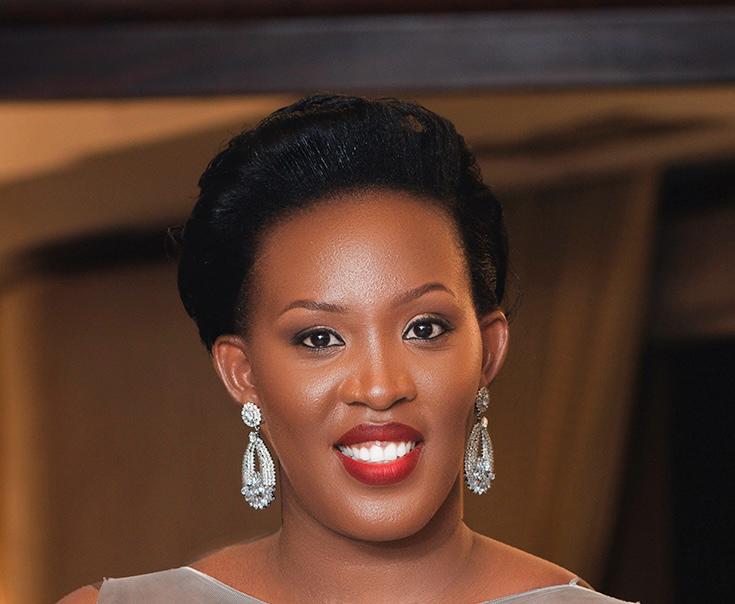Rwanda has 19,898 children with autism and is ranked 69 in the world.


Growing up in a small village, my childhood was marked by simple joys like ‘swimming’ in dirty water (wells) – the same water source for our cattle, playing netball and sometimes even football with the boys. Despite the charm of these rustic joys, my time in the small village was brief.
The pursuit of a better education led me to a city, where I immersed myself in academic endeavours. But every time I returned home to my village, instead of going to school, my peers were collecting firewood—all but one.
I would always see one little girl standing mutely by the roadside, talking to no one, alone. I always wondered why that was the case.... Only much later did I learn that this child was autistic.
Often, have I pondered upon the children who are left behind, not only by poverty but by their disability—and limited knowledge by parents and communities on how to support them.
Today, in my current position as Head of Solution Mapping at the United Nations Development Programme (UNDP) in Rwanda, I have the joy and responsibility of mapping learning solutions for children with conditions such as Autism Spectrum Disorder (ASD) and Down Syndrome among others. It is an area in need of great attention, and one with great promise.
Strangely enough, our current efforts began during the COVID-19 pandemic. In 2020, as the pandemic spread, UNDP introduced anti-epidemic robots, which assisted medical personnel in delivering food and necessities to patients while ensuring their safety.
With the pandemic subsiding in 2022 the UNDP in Rwanda embarked on a journey of repurposing those robots for broader development efficiency. This led us to conduct a solution mapping exercise in the education sector, particularly focusing on children with special needs.
We began working with Silver Bells Center in Kigali. It provides comprehensive services for early child development, including therapy services and special needs education.
However, the center faces a significant challenge in meeting the speech and language therapy needs of its more than 70 students with autism and Down syndrome disorders.
Currently, only two speech therapists are available at the center and there is no language and speech therapy training school in all of Rwanda. This not only leaves Silver Bells shorthanded, but also means that thousands of children and their families across Rwanda have no reliable information or professional support in guiding their children’s development and education.
Securing skilled professionals for speech therapy proves difficult. Across the region, only a handful of professional schools train therapists for children with autism. The Silverbells Center itself sources experts from around East Africa.
Language and communication are fundamental for the cognitive development of children, serving as essential tools for effective interaction with their environment. These skills allow children to express their needs, ideas, thoughts, and emotions, and grow to be happy and productive adults.
For their sake and for Rwanda’s national development, we must innovate to fill these crucial gaps—and this brings us back to the robots.
We have already begun to explore the use of robotics in speech therapy for children with speech and language difficulties. In doing so, we drew inspiration from various robots and robotics companies that specialize in speech therapy.
For instance, the NAO robot, that has proven effective in aiding children with speech difficulties due to its humanoid appearance and interactive capabilities. Other robots use social interaction algorithms to help children practice conversation.
Our initial work has demonstrated how robots can engage, support, and motivate children to enhance their speech and language abilities. However, the potential of robot assistants is even greater.
A recent programme by UNDP and our partners involved children from 5 to 12 years with speech and language challenges. Assistant robots were equipped with speech recognition, allowing them to engage in interactive conversations with the children.
Analysis of the results showed an increase in children’s ability to form coherent sentences and express their thoughts—and the gains were similar to those achieved using traditional therapy methods.
The integration of robotics in supporting children with speech and communication difficulties is a potentially transformative component of a broader, comprehensive approach. There are however some concerns, for example, children becoming overly reliant on robotic therapy and struggle to generalise their skills to real-life communication situations.
It is thus crucial to recognise that robotics is just one facet of the solution.
A comprehensive approach includes building a skilled workforce of professionals and paraprofessionals able to serve children with disabilities. For example, Rwanda’s 58,000 extensive network of Community Health Workers (CHWs) extended to all villages in Rwanda who provide healthcare services could be trained to recognise various speech and language-related disabilities, help parents understand and support their children, and provide basic educational and social supports.
Training is a key enabler of CHWs. Over the years, whenever a new CHW service package is added, the central level (through the Community Health Desk – CHD) develops requisite resources including treatment protocols, guidelines, reporting templates and registers. It could then be incorporated into CHW’s standard home visits.
Moving forward, we must continue to blend technological advancements with human expertise to develop an integrated approach that ensures inclusive support for every child. No child should be left standing alone by the roadside.
Vaster Kanyesigye is the Head of Solution Mapping at UNDP Rwanda, where she leads efforts to identify innovative solutions to complex development challenges.


